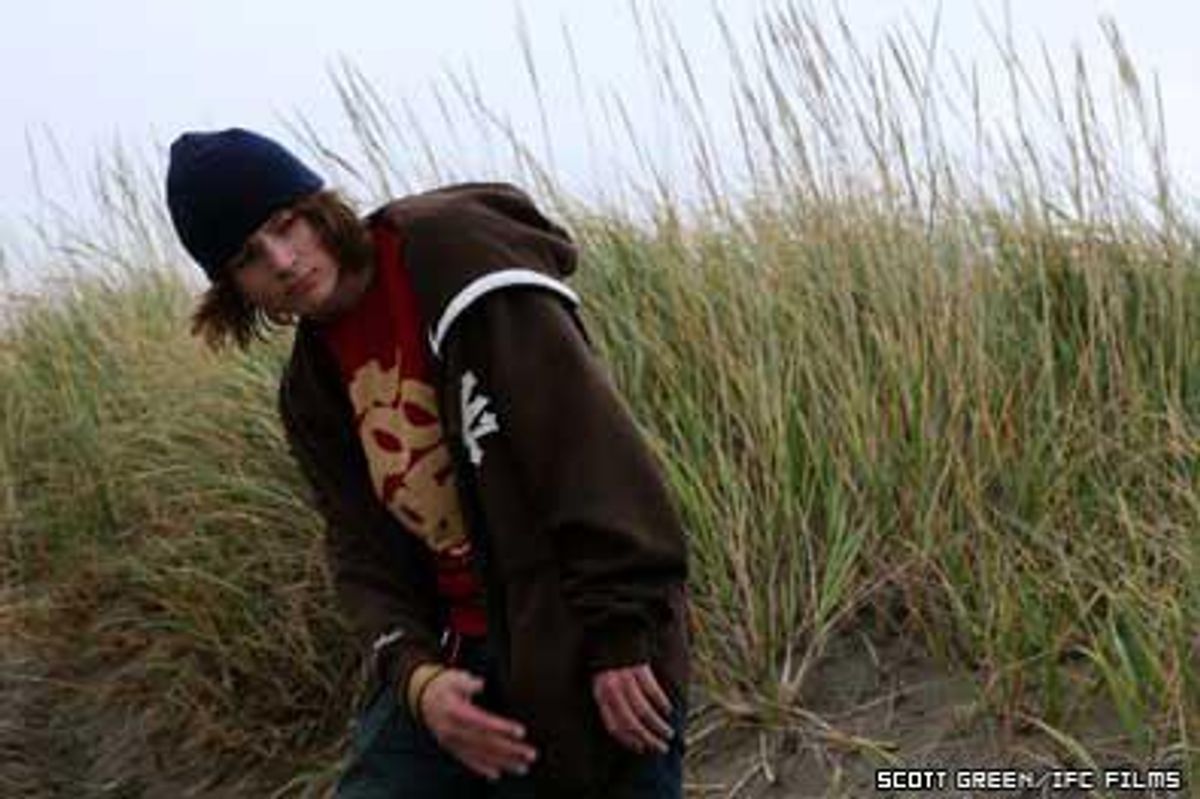Paranoid Park, openly gay director Gus Van Sant's latest modest-budgeted foray into youth culture, is a very personal film. His career has zigzagged between studio films and more intimate, sometimes esoteric, even experimental fare. Addressing this dichotomy, the introverted thinking man's filmmaker typically steers the discussion onto a plane that exists mostly in his own head.
Paranoid Park is about a skateboarder in high school, he says. That sounds very Disney to me.
Disney? Van Sant's
Good Will Hunting,
Finding Forrester, and maybe even
To Die For could have been Disney (forget
Psycho), but
Paranoid Park, one of this gifted auteur's finest achievements, would never have been approved by former Disney autocrat Michael Eisner (who banned the release of the Van Sant-executive produced
Kids, another film with skateboarders, by subsidiary Miramax), much less by ultra-rightwing company founder Walt.
From a marketing standpoint alone,
Paranoid Park has no stars. We were down to two Hollywood actors and three locals for the lead, says the Portland, Oregon-based Van Sant. The Hollywood guys were a lot worldlier. They would play innocent, rather than be it. Gabe [Nevins, who got the role] was 14, going on 15, and was genuinely removed. He lives in a place called Milwaukie that is technically part of Portland, but had been to Portland itself only once in his life. Nevins had answered a casting call in a newspaper, though most of the other cast responded to a MySpace posting.
A Botticelliesque beauty with Michelin Man lips, Nevins plays protagonist and narrator Alex, a high schooler and insecure skateboarded. A tabula rasa tormented by guilt, he accidentally kills a railyard security guard while on a nocturnal boxcar joyride with a homeless skateboarder named Scratch. The unfortunate man had struck the boys' legs with a nightstick, so Alex tapped his skull lightly with his board, causing him to fall in the path of an oncoming train and split in half. (Van Sant recalls that he himself was a trainhopper in the '70s.)
Then there are the film's unconventional aesthetics. Every so often in this moving camera-driven, convoluted tale we see non-narrative Super 8 inserts of accomplished skateboarders going up and down the sides of tunnel pipes or zipping around Portland's very real Paranoid Park. Some are homeless and live there. Glamorous, they are not. What is glamorous is their movement, the beauty of which is captured mid-action by director of photography and Wong Kar-wai veteran Christopher Doyle, along with skateboarding cinematographers Rick Charnowski and Buddy Nichols. This is as far away stylistically from Disney's squeaky-clean animation and children's tales as it is from Van Sant's recent Death Trilogy (
Elephant,
Gerry, and
Last Days), in which the camera is mostly static and the individual scenes sometimes endless. I also doubt if Walt would have gone for Ethan Rose's haunting soundscapes, what Van Sant calls ethereal wallpaper music.
It gets even less Disney. The lens worships Alex, especially when he changes from his blood-splattered clothes and takes a cathartic shower in slo-mo. He loses his virginity by essentially bottoming for his pesty girlfriend (in Blake Nelson's book, Alex knew that she would take charge, Van Sant explains). A homo flashback from Alex's point-of-view during the lovemaking was in the script. There was a scene that suggested an earlier sexual encounter with his friend Jared that we never shot, admits Van Sant. The parents were sensitive to it.
But the furtive glances and lingering stares between Jared and Alex and between Alex and Scratch silently address that nameless love. As does a shot coming immediately after the abortive hetero sex scene of Alex, Jared, and a third guy sitting comfortably in a hot tub. The casual domestic glimpses of Alex's soon-to-be-divorced father and Uncle Tommy foreground the boy's repression.
Van Sant has been chronicling gays and other marginals (junkies are a favorite, as in his breakthrough
Drugstore Cowboy) ever since his first feature,
Mala Noche (1985), in which a gay liquor store worker has an affair with a Mexican immigrant. Remember River Phoenix and Keanu Reeves's hustlers in
My Own Private Idaho? Check out the male prostitute Van Sant introduces in direct address in the hilariously titled short,
My New Friend (1987).
Whether gay or straight, his subjects tend to be youthful.
Mala Noche and
To Die For had young casts, Van Sant confirms.
Elephant was my first film with a completely young cast. I'm attracted to characters who are young. It's my calling. He understands firsthand the angst of the confused teen and twentysomething. I came out of the closet when I was 30, which is quite late, he recalls.
Ironically, his next project is about a much older subject: 48-year-old San Francisco city supervisor and gay activist Harvey Milk, tragically slain in 1978 by a deranged conservative fellow supervisor.
Milk, which features Sean Penn, points to another, more mature side of Van Sant. Perhaps it's time for some balance: He turned 55 last summer.
Send a letter to the editor about this article. 
